December 19, 2019
Yucatan 2019.
After a spot of business in Cancun (for the last time!), we rented a car and headed off toward Yucatán cenotes and Mayan pyramids. I’d been here plenty of times before, but for some reason only got as far as this here trinity of toursims: the ancient city of Chichen Itza, the ‘classic’ cenote Ik Kil, and the Rio Secreto underground river.
Since there are a great many cenotes and pyramids here, we carefully studied the internet first – determined which we still hadn’t seen but really should, and off we popped…
The roads here are top-drawer quality, so we decided to cover as many miles as possible to be able see as much tourisms as possible.
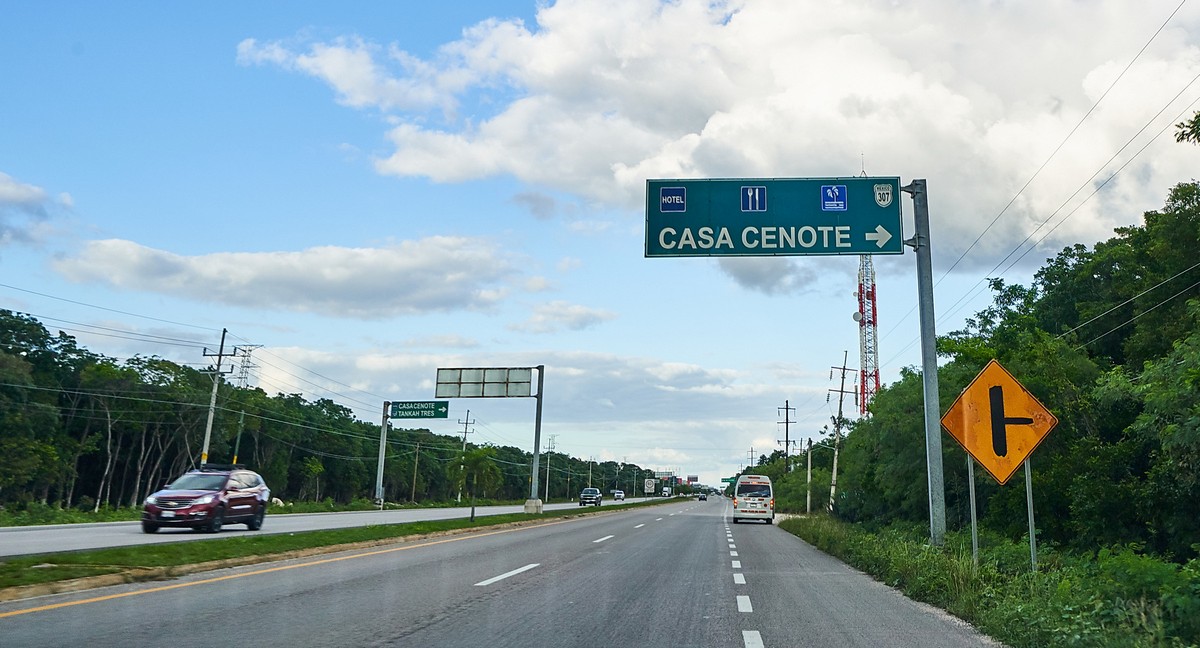
I’m not sure how many ancient Mayan pyramids there are in Yucatan, but as regards cenotes, this is what our guides told us: there are around 6000 cenotes in Yucatan, of which between 100 and 200 are open to tourists. Here’s a map with around 50 of the largest cenotes; however, it’s not the most up-to-date: some of the newest additions aren’t on it. For example, Los Monos, which was opened to the public in spring of this year. Meanwhile, here’s a list of the most notable cenotes, including those in other countries. Indeed, there are cenotes in other locations around the world, but Yucatan has more than all of them combined.
We opted for what seemed like the most impressive, and headed in its direction:
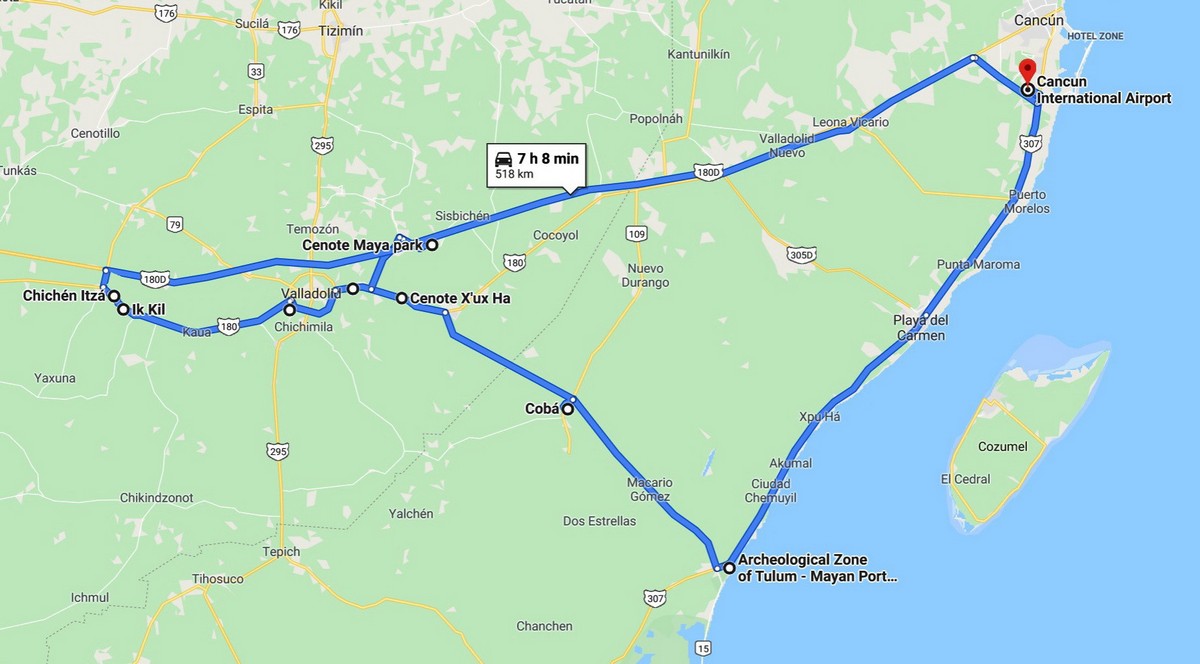
Road > hotel > pyramids > cenotes > road > hotel x 3 days. In some places (near Tulum), the concentration of Mayan ruins plus cenotes was so high that I’ve marked out a separate map:

I might as well give you these maps with our routes, since, as it turned out, they sure did seem like the ‘correct’ ones. Here’s a closer look at the route around the city of Valladolid:
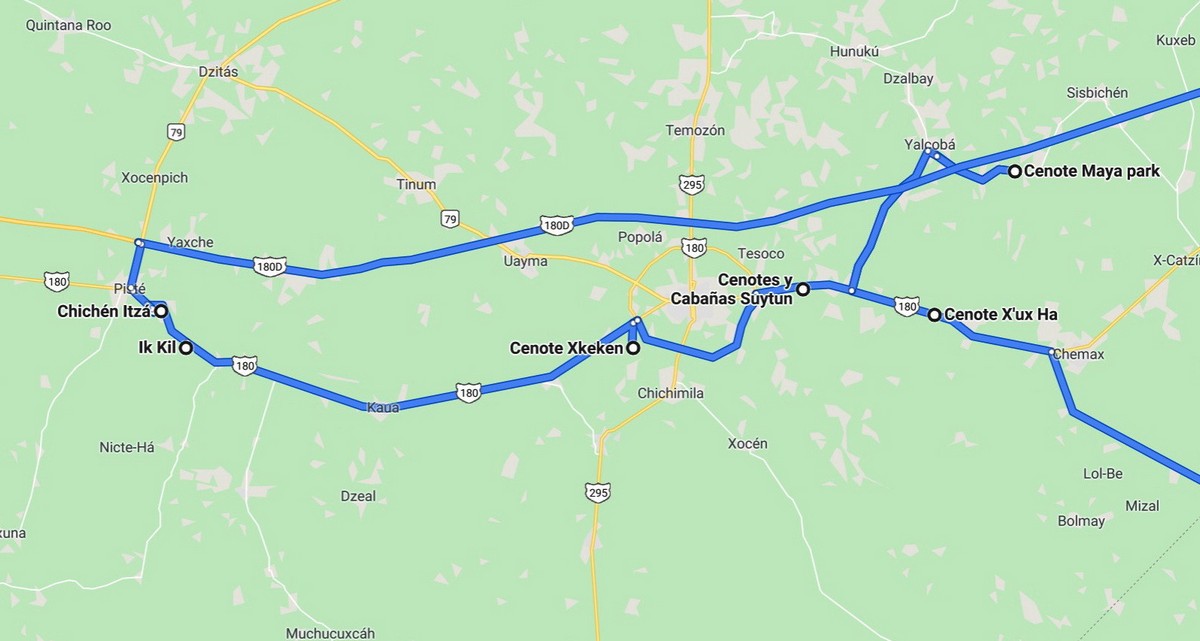
And there’s plenty to see round here: pyramids and ancient ruins – some restored, some not; all of them – beautiful:
Cenotes come in different shapes and sizes: some are domed, practically round caves with one or several holes in the dome:
Others are a dip in the earth, a small lake, and then a cave leading off somewhere far below…
It’s probably heaven for a diver (I’m not a diver:) to dive in underground tunnels and labyrinths such as these. We settled for a spot of snorkeling, but found there was hardly any light; as a result – hardly any pics, I’m afraid. You’ll just have to take my word for it – the underwater experience is unbelievably super!
But the video turned out real nice:
Cenote water is super-pure (naturally filtered by nature – through the sandstone), and super comfortable – around 25°C. This of course attracts lots of folks wanting to cool off a bit. In some places – way too many folks:
Meanwhile, the cenote next door – completely people-less. I mean – literally no one; besides DZ and me, that is, and small fish ).
So how are cenotes formed? Over millions of years water grindd away at the soft sandstone. The climate here is tropical and moist, the water oozes through the ground easily, and many kilometers of underground rivers are formed; these become caves and labyrinths, the roofs of caves fall in eventually, and then you have a cenote…
Of course, there are hundreds of amazing caves in the world, many with lakes, some with rivers (like the one we saw recently in Lebanon (Jaita)), but none, AFAIK, are quite like this: where you drop five or ten or twenty meters down into a cavern of such OMG awesomeness? Nope – only here: in Yucatan. Accordingly, we devoted a full three days to hardly anything but Yucatan’s cenotes…
Of a night we’d stay by the ocean…
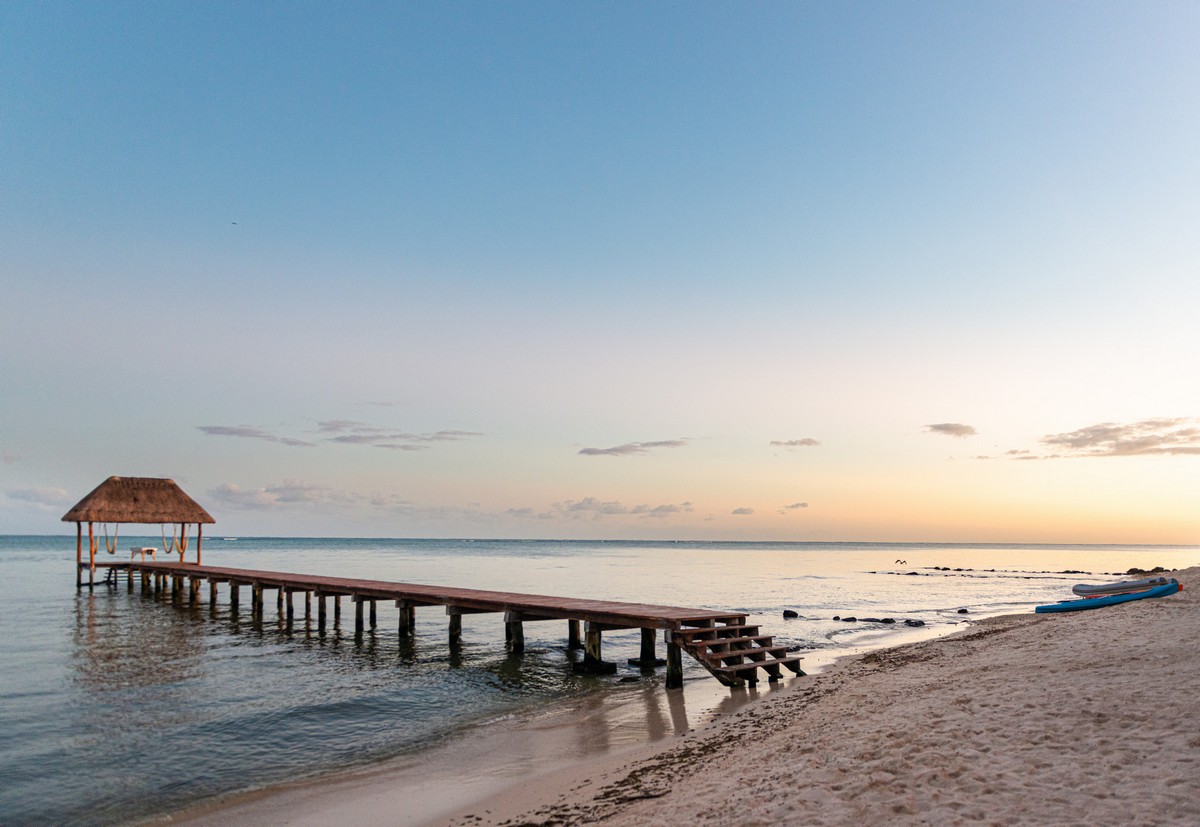
…Or in a town:
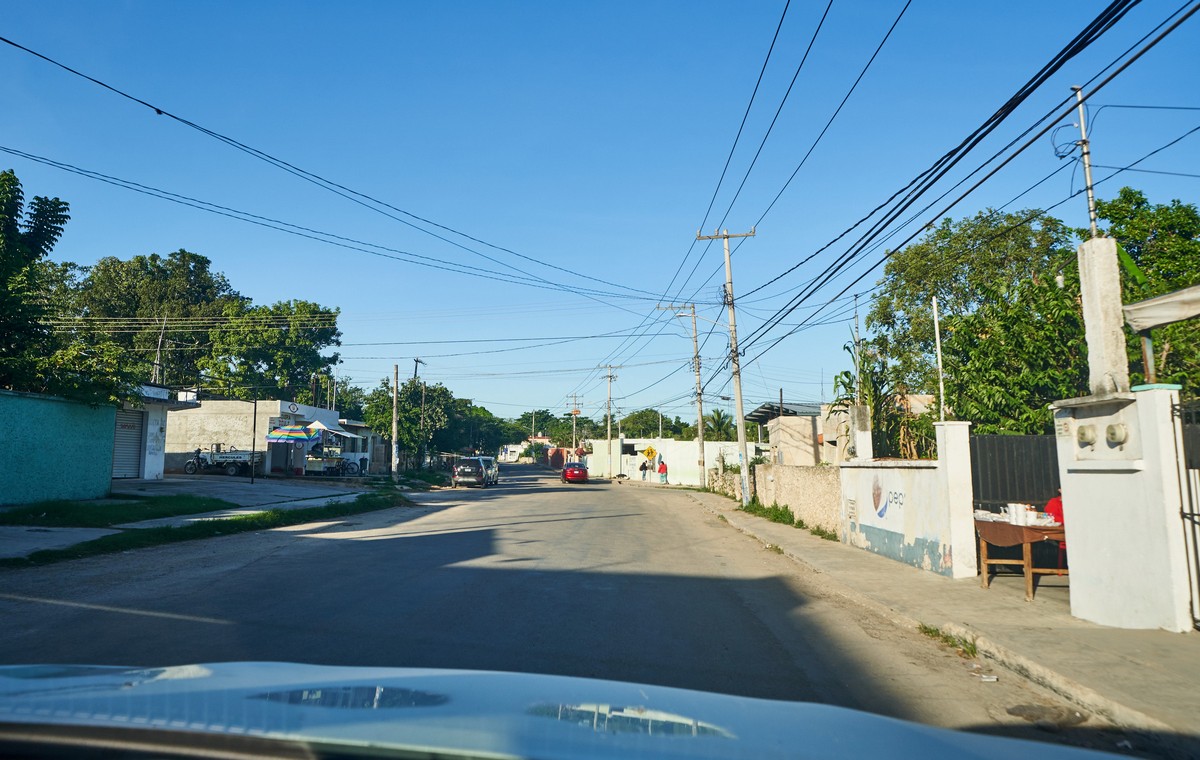
Along the roads – not only cars; also… creatures such as THESE!!! ->
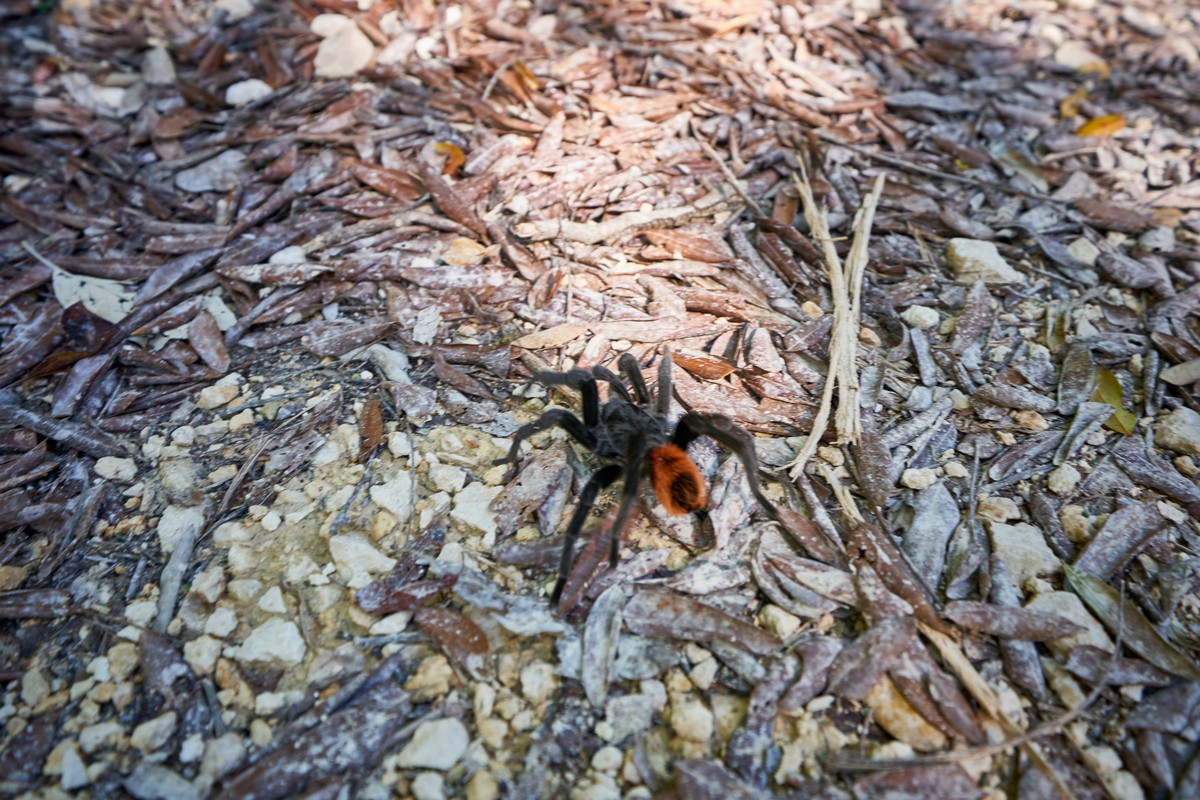
Early one morning we checked out some Mayan pyramids and ruins under the fierce November sun. Can’t imagine what it must be like here in summer.
Then, over to a beach or a nearby cool cenote…
Up the pyramid we climb…
Next – cenote!
Is it a 5* hotel’s underground spa?…
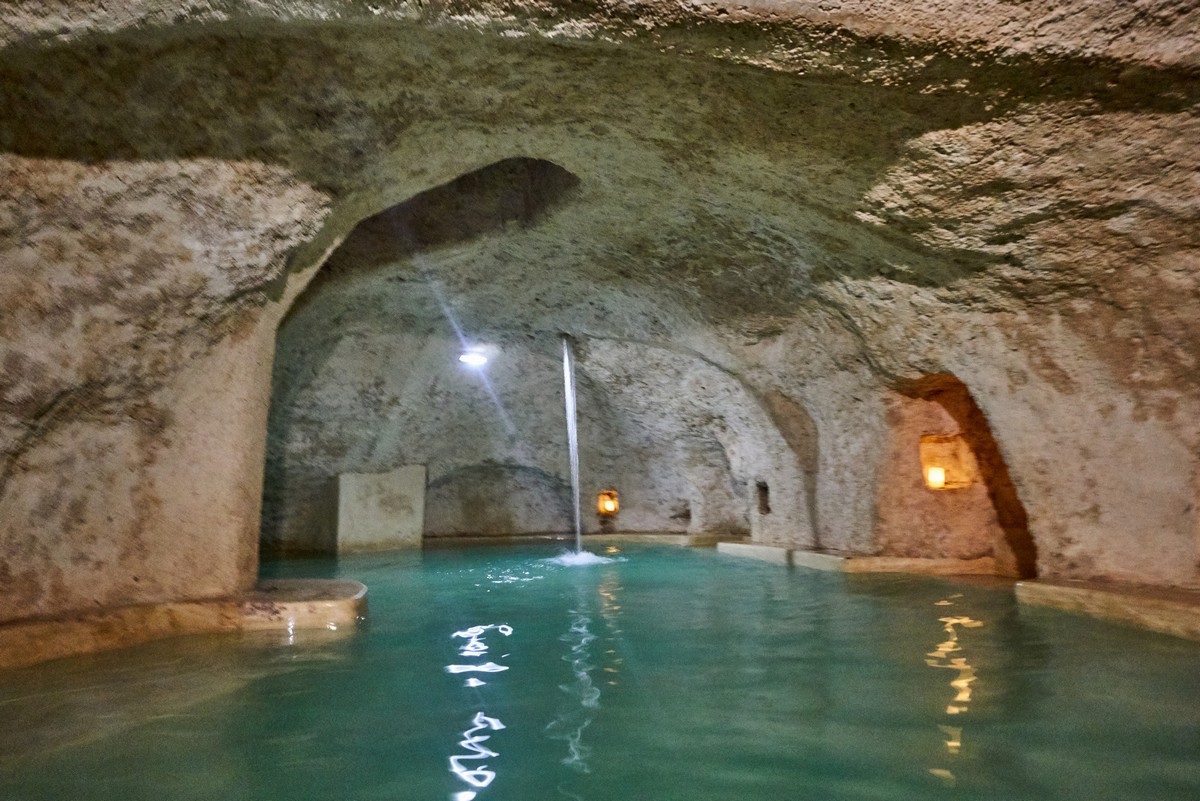
I’ll tell you in the next post!…
Indeed, next post: more from Yucatan. Then you can one day follow in our footsteps. I highly recommend you do…
All the pics from Yucatan are here.





































